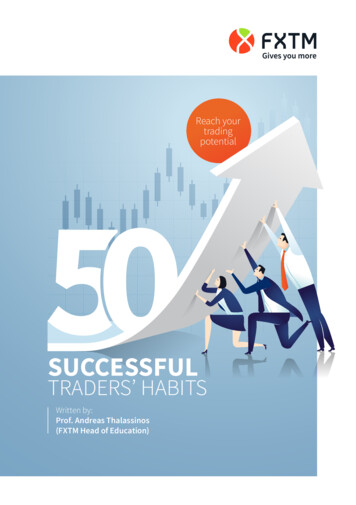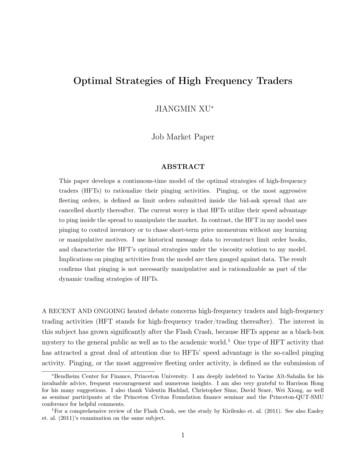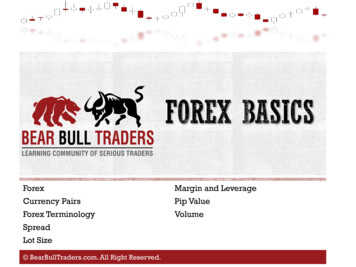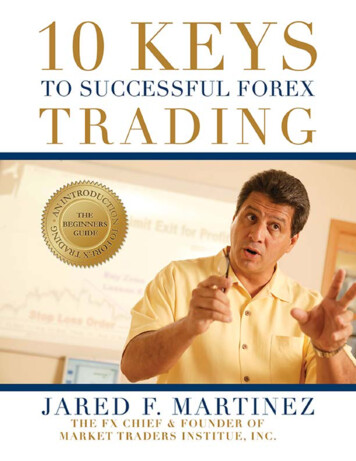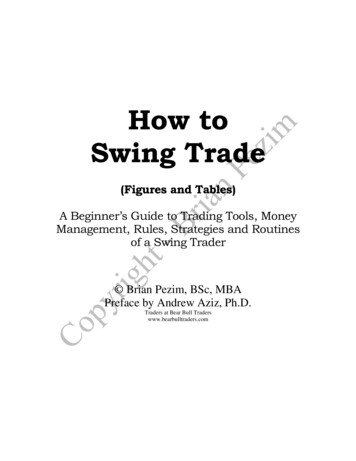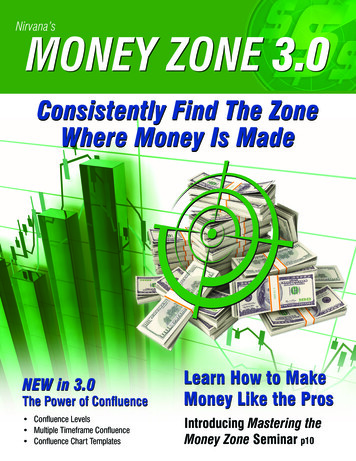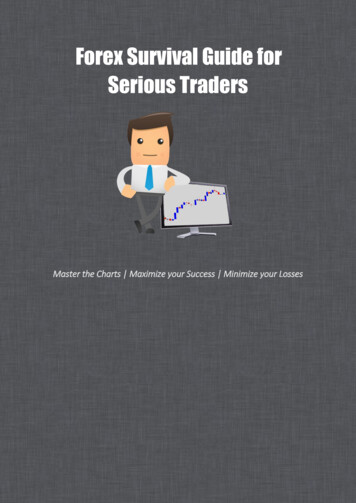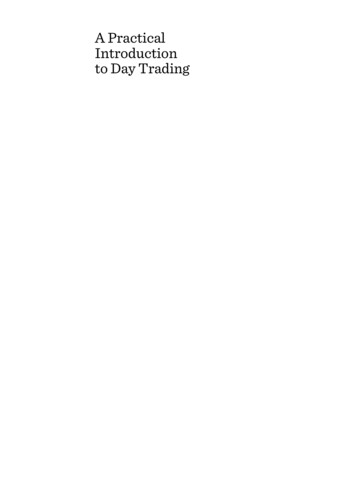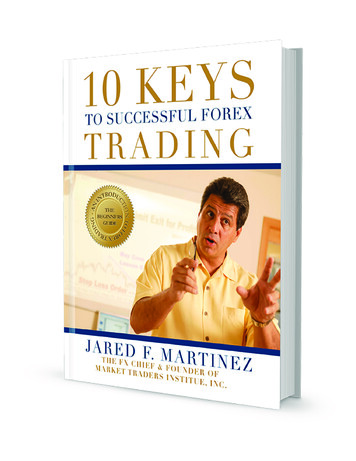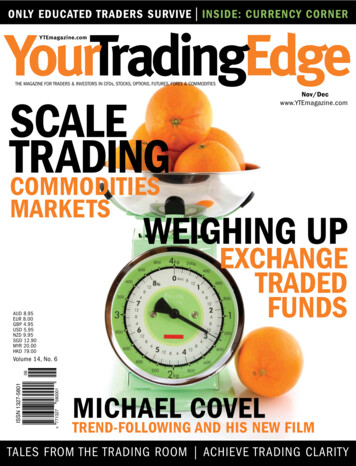
Transcription
XXXONLY EDUCATED TRADERS SURVIVE INSIDE: CURRENCY CORNERYourTradingEdgeYTEmagazine.comTHE MAGAZINE FOR TRADERS & INVESTORS IN CFDs, STOCKS, OPTIONS, FUTURES, FOREX & OMMODITIESMARKETSWEIGHING UPEXCHANGETRADEDFUNDSAUD 8.95EUR 8.00GBP 4.95USD 5.95NZD 9.95SGD 12.90MYR 20.00HKD 79.005800017713279ISSN 1327-580106Volume 14, No. 6MICHAEL COVELTREND-FOLLOWING AND HIS NEW FILMTALESFROM THE TRADING ROOM ACHIEVE TRADING JUL/AUGCLARITY20081 YOURTRADINGEDGE
CONTENTSNOV/DEC VOLUME 14, NO.6COVER STORYINTERVIEWSAkhilesh Kamkolkar provides strategiesfor traders.Ben Power speaks with high profile traderMichael Covel about trend-following and hisnew film ‘Broke’.30. Scale Trading Strategies forCommodities Markets V34. Michael Covel Q O V68. Trader’s Story Q O VGet to know your fellow traders: Kel Butcherspeaks with trader Erika Wils.COVER STORYREGULARS10. Market Snapshot QTom Scollon provides up-to-date analysis:come ride with me.34.12. Get it Right! OLouise Bedford helps you to achievetrading clarity.50. Proceed With CautionVDawn Bolton-Smith says watch the marketclosely for a change in direction.74. The Rub Q O V30.Michael Pascoe: To tweet or not to tweet?20. Commodities Corner OMarket expert, Aaron Lynch, explorescommodities markets.46. Trading Tax Q&A OResident tax expert Lee Hadnum answersreaders’ most pressing trading tax questions.48. Letters to Toni O 62. Trading Life OFEATURES22. Tales from the TradingRoom Q O VForex and futures trader Raghee Hornershares experience and lessons from hertrading life.Gary Norden shares real-life tradingstories: Rupert, don’t confuse brains with abull market.72. Marketplace/Seminars Q26. Market Cycles and TechnicalAnalysis Part III O VGarry Abeshouse concludes his look atmarket cycles: banking on derivatives.38. ETF Strategies Q O V10.Kyle Waller and Casey T Smith explorethe world of opportunities and accesscreated Exchange Traded Funds.8. Market News QREVIEWSThe latest news, announcements, servicesand trading tools to hit the market.64. Book Reviews Q O VYTE provides a roundup of the latest booktitles to hit the shelves.66. Software Review Q O VThree traders at different levels ofexperience test AmiBroker 5.20.14. Options Corner OOur resident options experts, JamesCordier and Michael Gross, answerreaders’ questions.18. Currency CornerO VWayne McDonell provides analysis of thecurrency market: extra value in capturingtrade DINGEDGE
EDITORIALNOV/DEC VOLUME 14, NO.6XXXONLY EDUCATED TRADERS SURVIVE INSIDE: CURRENCY CORNERYourTradingEdgeYTEmagazine.comTHE MAGAZINE FOR TRADERS & INVESTORS IN CFDs, STOCKS, OPTIONS, FUTURES, FOREX & COMMODITIESNov/Dec ETSWEIGHING UPEXCHANGETRADEDFUNDSAUD 8.95EUR 8.00GBP 4.95USD 5.95NZD 9.95SGD 12.90MYR 20.00HKD 79.00580001771327ISSN 1327-580106Volume 14, No. 6MICHAELCOVELTREND-FOLLOWING AND HIS NEW FILMTALES FROM THE TRADING ROOM ACHIEVE TRADING CLARITYIhave recently returned from a holiday in Japan, where I was lucky enoughto witness first hand the spectacle of sumo wrestling. I was surprised thatafter such extensive training (and eating) the actual bout itself is over injust a few seconds. Much like some trades, sumo appears to be all in thepreparation and execution.As we head to the end of the year, I trust that with YTE close at handyou will go into 2010 well prepared, no matter what the market throwsat you. In this issue Garry Abeshouse concludes his look at Market Cycles(page 26); we welcome Kyle Waller and Casey T Smith who explore the worldof opportunities created by Exchange Traded Funds (page 38); Gary Nordencommences his series of real-life lessons learned from the trading room (page22); in our cover story Akhilesh Kamkolkar looks at scale trading strategies forcommodities markets; and as trend-following strategies come back into focusYTE's Ben Power catches up with Michael Covel to discuss trading strategiesand his new film, 'Broke'.From all at YTE we wish you a safe and enjoyable holiday period and lookforward to continuing to give your trading the edge in 2010.Until next year, happy reading and profitable trading.Chelsea ReidEditor in Chief – ge is published byMarketSource International Pty Ltd.www.market-source.comEditor in Chief - Chelsea ReidEmail - chelsea.reid@YTEmagazine.comExecutive Chairman - Paul SchlusserChief Executive Officer - Gary AitchisonOnline Editor - Amy NowellSub Editor - www.edit.co.nzChief Technical Officer - Simon LukellChief Financial Officer - Jim AndersonSales and Marketing Executive - Shayne AchurchBusiness Development (South East Asia) - Wendy TanHead Office - Suite 10, Ground Floor, 7 Narabang WayBELROSE NSW 2085Phone 61 2 9486 3622Fax 61 2 9986 3575South East Asia - 37th Floor Singapore Land Tower, 50 RafflesPlace SINGAPORE 048623Phone 65 6829 7153Fax 65 6829 7276United Kingdom - Suite G1, Providan House 16-18Monument Street LONDON EC3R 8PDPhone 44 2 0717 35029Fax 44 2 0717 35146Copyright 2009 MarketSource International Pty Ltd.(ABN 16 073 897 417)ISSN 1327-5801The information contained in YourTradingEdge (published and onlinematerial) is based on information that is believed to be accurate and upto date at the time of publication. Neither MarketSource International PtyLtd (“MSI”), nor its Directors or employees give any warranty of reliabilityor accuracy and readers should rely on their own assessment andinquiries. With respect to third party material published or referred to byYourTradingEdge, such material is published or referred to for informationonly and neither YTE, MSI nor any of their staff, warrant its accuracy orreliability. Information contained in published and online material isintended to be of a general nature and is not intended to give financialor investment advice. It is recommended that specific advice be soughtprior to acting on any matter contained herein. The opinions expressedin this magazine are those of the authors, not MSI, unless otherwisestated. The publisher has the right to reject or omit from publication anyadvertisement or part thereof.All material in YourTradingEdge is protected under the CommonwealthCopyright Act 1968. This published or online material may not, in wholeor part, be lent, copied, photocopied, reproduced, translated or reducedto any electronic medium or machine-readable form without the expresswritten permission of MSI.For all advertising enquiries, please emailadvertising@YTEmagazine.com or call 61 2 9486 3622.4YOURTRADINGEDGENOV/DEC
MICHAEL COVEL34 YOURTRADINGEDGENOV/DEC
MICHAEL COVELMichaelCOVELBen Power speaks with high profile trader Michael Covel abouttrend-following and his new film ‘Broke’.Michael Covel is a passionatepromoter of the trend-followingtrading strategy, which seeksto profit from big market moves.Covel first became interestedin trend following after hearingthe story of a group of traders,dubbed the ‘Turtles’, who weretaught trading as part of anexperiment by industry legendRichard Dennis. Covel began promoting and teachingtrend following on his internet sites, turtletrader.comand michaelcovel.com. He has released two books onthe subject, ‘Trend Following’, and ‘The Complete TurtleTrader’, which includes the story of the ‘Turtles’.Covel has been a strident critic of conventionalfinancial methods, including the ‘buy and hold’ method.He recently turned his sights on the entire Wall Streetsystem, directing a film, ‘Broke: The New AmericanDream’. The film is unique in that it doesn’t blame justbig-time finance operators for bringing the world’sfinancial system down; it also puts the blame squarelyon regular people who – often driven by greed – handedtheir money to a variety of scam artists.Covel grew up in Virginia and now shuttles betweenVirginia, San Diego and Las Vegas. He spoke with YTEabout his new film, and trend following as a successfultrading strategy.NOV/DECWe've just been through the worst financial crisissince the Great Depression. Your film, 'Broke: The NewAmerican Dream', is a hard-hitting critique of the financeindustry. What went wrong?America and much of the world came to believe stocks and real estatecould only go up. That belief caused trillions of dollars to be lost byinvestors. In many ways the actions people were taking meant we’dend up with lots of people broke. Did everyone lose? No. People witha good strategy did not blow up. Many made money. I would arguethat if you had no job and were speculating recklessly in stocks or realestate, and if you did not consider the ‘odds’ of making the money yousought, you really wanted to be broke. Controversial premise? You bet.True? In my opinion, yes.There are signs of a recovery coming through. Do youthink there's been enough pain? Are you seeing anysigns that people have actually learned lessons fromthe crisis?Pain? Many people made money! So who are we talking about? Thepeople with no strategy who bet that everything would go up foreverand had no plan for an exit? Those people? Have they had enoughpain? I don't know if they have. Have people learned? Human naturedoesn't change. Bubbles come and bubbles go. I am sure there willbe another one soon. The question is: can government save marketsfrom crashing every time by lowering rates to zero and printing money?Will that always work as a solution? I doubt it. The NASDAQ was at5000 in the year 2000. Today it stands at roughly 2000. That's 3000points less than nine years ago. The Nikkei was at 39,000 in 1989.Today it is roughly at 10,000. Do the Japanese believe in buy and holdYOURTRADINGEDGE35
MICHAEL COVELand ‘recovery’? Lastly, think about the idea of‘recovery’. United States’ unemployment is ata 26-year high. I can't predict the future, butthat number is brutal.One of the themes in ‘Broke’ appearsto be that people should stopblaming others for their financialwoes and take responsibility. Cantrading be a good way to takecontrol of personal finances?Yes, as long as you have a sound strategy.If you don't put the time in to find a soundstrategy, you are in trouble.Once a trend ‘appears’ to be beginning,I assume trend followers just jump onboard. What would be an example ofa trend-following entry and exit?A simple trend-following entry and exit is abreakout. For example, a 55-day breakout ofthe highest high (long entry) or lowest low(short entry) is a typical trend-following entrytrigger. Conversely, a common exit wouldDo you have any recent or historicexamples of market moves that trendfollowers have successfully ridden?Sure. On page 134 of the latest edition of‘Trend Following’, I illustrate a ChadwickInvestment Group trade where they shortedlean hogs in August 2008 and exited inNovember 2008 (figure 1).FIGURE 1: LEAN HOGSCan you tell us how you got interestedin trading, and, more specifically,trend following?I read an article on the 'Turtle' traders in1994. It said a guy named Jerry Parker wentto a ‘school’ and learned ‘technical’ tradingstrategies. That was it. I wanted to learn whathe was taught.What are the key principles behindtrend following that make it differentfrom other strategies? How do trendfollowers typically define a trend?Trend following is simply an idea. It's a tradingidea for making buy and sell decisions in anymarket. A trader takes an idea, turns it intoa mathematical formula and tests it to seeif it would have made money. A good trendfollowing trading system doesn't buy low andsell high; it rides trends. Trend followers don'tget entry or exit signals and apply some extralayer of ‘human judgment’. They don't try to besmarter than the system.You can't know a trend until it is over. Famedtrend follower Ed Seykota has said: "There isno such thing as the trend; there are countlesstrends, depending on the method we useto determine a trend There is no way todetermine the current trend, or even definewhat ‘current trend’ might mean; we can onlydetermine historical trends."The reality is that while the strategy iscalled trend following it is not about spottingor finding trends (an impossible task). Trendfollowing is best executed in the form ofa trading system. That trading system willanswer these five questions:s 7HAT MARKET DO YOU BUY OR SELL AT ANY TIMEs (OW MUCH OF A MARKET DO YOU BUY OR SELL ATany time?s 7HEN DO YOU BUY OR SELL A MARKETs 7HEN DO YOU GET OUT OF A LOSING POSITIONs 7HEN DO YOU GET OUT OF A WINNING POSITIONIf you have answers to those five questions,you have a trend-following trading strategy.36 YOURTRADINGEDGEbe a 20-day lowest low (for long entry) orhighest high (for short entry). Said anotherway: enter on a 55-day breakout and exit ona 20-day breakout in the opposite directionfrom your entry. Entry might be sexy, butexit and money management are the keys tolong-term success.I assume traders could be wrongquite a few times before catching areal trend?Absolutely. I was once told a story about PaulTudor Jones making more than ten entrieson the same market, only to be stopped outeach time with a small loss. The eleventhtime was the charm and the market tookoff in his direction and gave him one of hisbiggest wins.Are fundamental criteria used todetermine entries?No.How did trend followers performduring the global financial crisis?In 2008 most made fortunes. Often from50 per cent to more than 100 per cent forthe year.Most trend followers trade futures,such as currencies and even hogs,as in the example above. Does thestrategy work with equities as well?Yes. People mistakenly get fixated on theinstrument. Wrong move. It's the market. Ifyou want to trade stocks as a trend follower,you can trade LEAPS, ETFs, many options,and so on.One of the highest-profile trendfollowers, John W Henry, who ownsthe Boston Red Sox, has had atough time, with his assets undermanagement plummeting after a bigdrawdown. How is he doing now?He did very well in 2008. His assets droppeddue to Merrill Lynch pulling money right atthe bottom of a drawdown. If Merrill hadstayed on board, they would have beenrichly rewarded. But clearly Merrill hadlarger issues over a bad decision in theirtrend-following allocation. They no longerexist as an independent concern! Theyessentially imploded and were sold off toa bank.NOV/DEC
XXXMICHAEL COVELDo you think trend following hasbeen unfairly maligned because ofbig drawdowns like Henry recentlysuffered, when the drawdowns instock markets can be just as big –and that's without leverage?Great point – and my point exactly! Mutualfunds clearly take massive drawdowns. Maybepeople will talk of them now.the Wall Street Journal looking for novices totrain. His recruits, later known as the Turtles,had anything but traditional Wall Streetbackgrounds; they included a professionalblackjack player, a pianist, and a fantasygame designer. For two weeks, Dennis taughtthem his investment rules and philosophy,and set them loose to start trading, each witha million dollars of his money. By the time therequires a certain psychologicalmake up, including the ability toaccept a lot of losing trades andpatience to ride big trends. Are somejust not suited to it as a method?That is an interesting question. Is anyonesuited to go through the fall of 2008 again asa buy-and-hold trader? I saw massive volatilityand massive losses – all with a strategy (buyA good trend-following trading system doesn't buy low andsell high; it rides trends. Trend followers don't get entry orexit signals and apply some extra layer of ‘human judgment’.They don't try to be smarter than the system.Trend following seems to attractsome unique individuals, like Henry.Who are some of the other greatcharacters you’ve met?I have met quite a few trend traders who arecharacters – from David Harding to SalemAbraham, and Ed Seykota to Richard Dennis.Tops for me is Larry Hite. Hite is a livingtrend-following legend (profiled in the ‘MarketWizards' book). Hite is the consummate NewYork guy, who just happens to love the ‘betting’involved in trend following (along with a goodjoke or two!).Another great character is Bill Dunn. He hasa track record going back to the mid 1970s ofnearly 20 per cent a year on average. That isjust incredible. Do the compounding on thosenumbers. Dunn is a former Marine who worksout of sleepy Stuart, Florida. For people whothink of glass towers in New York, London andTokyo as the ‘place’ to be for traders, Dunn'sworld is a culture shock. Working out of thattown in Florida placed him in the top 10 ofall traders for 2008. His earnings were northof 60 million. He let me use a quotation ofhis on the front cover of my 2009 edition of‘Trend Following’: "We don't make marketpredictions. We just ride the bucking bronco."Central to the trend-following historyis the story of a group of traders calledthe Turtles, which you outline in yourmost recent book, ‘The CompleteTurtle Trader’. Who were they?Richard Dennis made a fortune on Wall Streetby investing according to a few simple rules.Convinced that great trading was a skill thatcould be taught to anyone, he made a betwith his partner and ran a classified ad inNOV/DECexperiment ended in 1988, Dennis had madea hundred million dollars from his Turtles andcreated one killer Wall Street legend.Are the Turtles still trading?Six original Turtles still trade for clients. Some,like Jerry Parker, had the emotional andpsychological discipline to keep at the system.He has arguably made a billion dollars, allfrom answering a want ad. The Turtles weretaught rules, and those rules worked, but therewas more to it. I spent a decade investigatingthat ‘more’.Are the Turtle rules available?Sure, they are no secret. I put the Turtlerules, philosophy, psychology and theirperformance results in my book, ‘The CompleteTurtleTrader’. I caution readers though. Theconcept of ‘Turtle’ rules is misleading. In fact,several original Turtles, specifically ones whowere long-term trading failures, have madethe concept of Turtle ‘secret rules’ a businessmodel. However, the psychology involvedin successful Turtle trend following is clearlymuch more important than the nonsensicalnotion of ‘secret rules’. The single biggestcompliment I receive about my Turtle bookis, "Wow, I thought I knew the Turtle story. Ithought wrong!"Do the Turtle rules still work?Turtle trading is trend following. Yes, it stillworks. In fact, I recently sat in at a live panelcomprising Richard Dennis and his four mostsuccessful students. They are all essentiallydoing the same thing two decades later.You mentioned the importance ofpsychology. I assume trend followingand hold) that is predicated on believingmarkets always bounce back. Trend followingis harder emotionally than that? I don't thinkso. People need to make choices. If they wantto run with the herd, they can do so. If theywant the chance for more money than theirneighbour – trend following is an option.Does executing a ?Trading rules can be written down on a sheetof paper. The philosophy and rules of trendfollowing should always be easily explainablein base form. Automating those rules, puttingthem into ‘code’, can be as diverse as who isthe programmer at the task. No one size fitsall. That said, there are programs out therethat can make trend-following automationmuch easier.Finally, I understand you're a trendfollowing purist, but are there anygeneral principles that other traderscan take from it?Sure. Here is a big one. Before you everenter a market on any trade using any tradingapproach – know exactly how much you arewilling to lose. That might sound simple, butvery few really do it. How much are you willingto lose? You can control that. It's a choice.Ben Power is a writer, journalist and trader.He has written on politics, economics andfinance for numerous publications.YOURTRADINGEDGE37
tales from the trading room achieve trading clarity only educated traders survive inside: currency corner 9 771327 580001 06 issn 1327-5801 your tra dingedge the magazine for traders & investors in cfds, stocks, options, futures, forex & commodities nov/dec www.ytemagazine.com michael covel trend-following and his new film scale trading .
